Heaters and preheaters of the German company Eberspächer are world-famous devices that increase the comfort and safety of winter operation of equipment. Read about the products of this brand, its types and main characteristics, as well as the selection of heaters and heaters in the article.
Eberspächer products
Eberspächer traces its history back to 1865, when Jacob Eberspecher founded a workshop for the manufacture and repair of metal structures. Almost a century later, in 1953, mass production of transport heating systems was launched, which since 2004 have become the main products of the company. Today, Eberspächer is one of the market leaders in preheaters, interior heaters, air conditioners and accessories for cars and trucks, buses, tractors, special and other equipment.
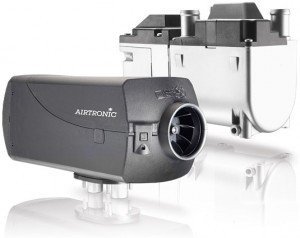
The Eberspächer product range includes six main groups of devices:
● Autonomous preheaters of the power unit Hydronic;
● Airtronic autonomous cabin air heaters;
● Salon heaters of the dependent type of Zenith and Xeros lines;
● Autonomous air conditioners;
● Ebercool and Olmo evaporative type air coolers;
● Control devices.
The largest share of the company's products is occupied by heaters and heaters, as well as dependent heaters - these devices, which are in great demand in Russia, should be described in more detail.
Eberspächer Hydronic preheaters
Hydronic devices are autonomous preheaters (the company also uses the term "liquid heaters") that are integrated into the liquid cooling system of the power unit, ensuring that it warms up immediately before starting.
Several lines of Hydronic heaters are produced, differing in thermal power and some design details:
● Hydronic II and Hydronic II Comfort - devices with a capacity of 4 and 5 kW;
● Hydronic S3 Economy - economical devices with a capacity of 4 and 5 kW;
● Hydronic 4 and 5 - 4 and 5 kW;
● Hydronic 4 and 5 Compact - compact devices with a capacity of 4 and 5 kW;
● Hydronic M and M II - medium devices with a capacity of 10 and 12 kW;
● The Hydronic L 30 and 35 are large devices with a capacity of 30 kW.
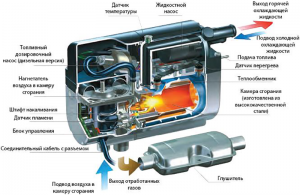
Design and principle of operation of the Hydronic 4 and 5 kW preheater
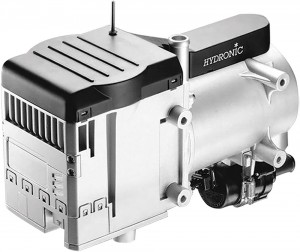
Hydronic preheater
Heaters with a capacity of 4 and 5 kW are available in gasoline and diesel versions, devices with a capacity of 10, 12, 30 and 35 kW - only in diesel versions. Most low-power devices have a 12 V power supply (and only some 5 kW models are offered at 12 and 24 V), as they are designed for use in cars, minibuses and other equipment. Heaters for 10 and 12 kW have modifications for 12 and 24 V, devices with a capacity of 30 and 35 kW - only for 24 V, they are designed for use on trucks, buses, tractors and various special equipment.
The type of fuel and power are usually encoded in the first two characters of the marking: gasoline heaters are indicated by the letter "B", diesel heaters are indicated by "D", and the power is indicated as an integer. For example, the B4WS device is designed for installation on cars with a gasoline engine and have a power of 4.3 kW, and the D5W device is designed for installation on vehicles with a diesel engine, have a maximum power of 5 kW.
All Hydronic preheaters have a fundamentally identical device, differing in individual structural elements and dimensions. The basis of the device is the combustion chamber, in which the nozzle and the ignition device of the combustible mixture (incandescent pin or spark plug) are located. Air is supplied to the combustion chamber by a supercharger with an electric motor, exhaust gases are discharged into the atmosphere through a pipe and a muffler. Around the combustion chamber there is a heat exchanger through which the fluid of the engine cooling system circulates. All this is assembled in a single case, which also houses an electronic control unit. Some models of heaters also have a built-in fuel pump and other auxiliary devices.
The principle of operation of heaters is simple. Fuel is supplied to the combustion chamber from the main or separate fuel tank, it is sprayed by a nozzle and mixed with air - the resulting combustible mixture is ignited and heats the liquid circulating through the heat exchanger. Hot gases, having given off heat in the combustion chamber, are discharged through the muffler into the atmosphere. The electronic unit monitors the presence of flame (using the appropriate sensor) and the temperature of the coolant, and in accordance with the program turns off the heater - this can occur either when the required engine temperature is reached, or after the set operating time. The heater is controlled using a built-in or remote unit, or using a smartphone application, more on this below.
Eberspächer Airtronic cabin air heaters
Air heaters of the Airtronic model range are autonomous devices designed to heat the interior/cabin/body of vehicles. Eberspächer produces several lines of devices of different capacities:
● B1 and D2 with a power of 2.2 kW;
● B4 and D4 with a power of 4 kW;
● B5 and D5 with a power of 5 kW;
● D8 with a power of 8 kW.
All gasoline models are designed for a supply voltage of 12 V, diesel of the first three lines - 12 and 24 V, and diesel 8-kilowatt - only 24 V. As in the case of heaters, the type of fuel and power of the device are indicated in its marking.

Airtronic air heater
Structurally, Airtronic air heaters are "heat guns": they are based on a combustion chamber surrounded by a heat exchanger (radiator), through which an air flow is driven with the help of a fan, which ensures its heating. To work, the air heater must be connected to the on-board power supply, as well as to ensure the removal of exhaust gases (through its own muffler) - this allows you to install the device in almost any area of the cabin, cabin or van.
Eberspächer Zenith and Xeros dependent type cabin heaters
These devices act as an additional cabin heater (stove), which is integrated into the small circuit of the liquid engine cooling system. The presence of a second stove increases the heating efficiency of the cabin or cabin. Currently, Eberspächer (or rather, a division of Eberspächer SAS, France) produces two lines of devices of this type:
● Xeros 4200 - heaters with a maximum power of 4.2 kW;
● Zenith 8000 - heaters with a maximum power of 8 kW.
Both types of devices are liquid heat exchangers with built-in air blowers, they are available in versions of 12 and 24 V. Such stoves are suitable for most cars and trucks, buses, tractors and other equipment.
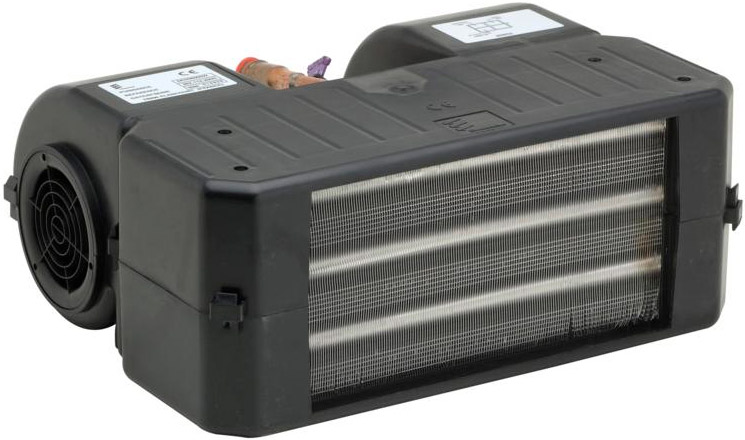
Zenith 8000 dependent heater
Eberspächer control devices
For the control of heaters and air heaters, Eberspächer produces three types of devices:
● Stationary control units - for placement in the cab / interior of the car;
● Remote control units - for radio control at a distance of up to 1000 m;
● GSM devices - for management over mobile networks (GSM) at any distance in the network access area.
Stationary units include "EasyStart" devices of the "Select" and "Timer" models, the first model is designed for direct control and control of the operation of heaters and heaters, the second model has a timer function - turning on and off devices at a specified time.
Remote units include "EasyStart" devices of the "Remote" and "Remote+" models, the second model is distinguished by the presence of a display and a timer function.
GSM devices include "EasyStart Text+" units, which can control heaters and heaters on command from any phone, as well as through a mobile application for smartphones. These units require the installation of a SIM card for operation and offer the widest possible control and monitoring of Eberspächer devices located in the vehicle.
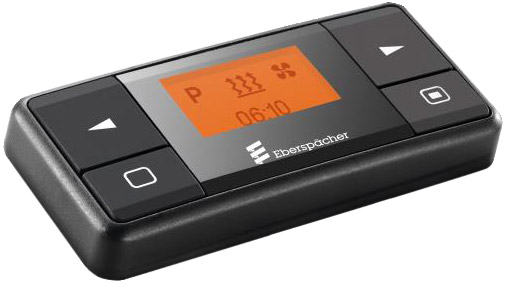
Stationary control device EasyStart Timer
Issues of selection, installation and operation of Eberspächer heaters and heaters
When choosing liquid and air heaters, you should take into account the type of vehicle and its engine, as well as the volume of the passenger compartment / body / cabin. The purpose of devices of various types was mentioned above: low-power heaters are designed for cars, medium-power devices for SUVs, minibuses and other equipment, powerful devices for trucks, buses, tractors, etc.
When buying, it should be borne in mind that heaters and heaters are offered in various configurations: the minimum - with separate additional units (for example, with a fuel pump) and in the maximum - with an installation kit. In the first case, you need to purchase additional equipment, pipes, fasteners, etc. In the second case, everything you need is present in the installation kit. Control devices must be purchased separately.
It is recommended to trust the installation of the heater or heater to certified centers or specialists, otherwise the warranty may be lost. Operation of all devices should be carried out only in accordance with the supplied instructions and recommendations of the manufacturer.
Post time: Jul-12-2023
